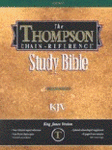Before there was Bible software, there were study Bibles—printed Bibles with brief commentary in the form of marginal notes. In this series of posts, we’re looking at the history of study Bibles and the reasons for their ongoing popularity. In part 1 of this series, we looked at The Geneva Bible, which was almost certainly the first printed study Bible in English. Its explanatory marginal notes offered guidance in how to interpret the Bible at a time when many people were first beginning to read the Bible for themselves, and it became a powerful means of disseminating the Reformed/Calvinistic viewpoint. As we saw, the Geneva Bible eventually became a victim of its own success. Objections to its sectarian nature led the King James Bible to be published without explanatory notes, and the study Bible format was not revived for several centuries.
Interestingly, the historical circumstances which led to the resurrection of the study Bible format were strikingly similar to those in which the Geneva Bible appeared. At the beginning of the twentieth century, theological liberalism was gaining influence in many large denominations and their flagship seminaries, challenging long-standing understandings of the Bible and sparking a conservative backlash. Many pastors and laypeople felt inadequate to respond to those challenges and were looking for some help. They found it in the Scofield Reference Bible, a study Bible by American minister C. I. Scofield which articulated a fundamentalist, inerrantist, and dispensationalist understanding of the Bible. The Scofield Reference Bible quickly became popular among theological conservatives.
 Another study Bible published in the early twentieth century was the Thompson Chain Reference Bible. Where the Geneva Bible and Scofield Reference Bible offered brief commentary from a particular doctrinal perspective, the Thompson Chain’s marginal notes listed topics or themes articulated by a given verse, along with a cross-reference to the next verse that speaks to each theme. By following each “link” in these topical “chains,” the reader could see the development of these themes throughout the Bible.
Another study Bible published in the early twentieth century was the Thompson Chain Reference Bible. Where the Geneva Bible and Scofield Reference Bible offered brief commentary from a particular doctrinal perspective, the Thompson Chain’s marginal notes listed topics or themes articulated by a given verse, along with a cross-reference to the next verse that speaks to each theme. By following each “link” in these topical “chains,” the reader could see the development of these themes throughout the Bible.
The success of these study Bibles, both of which have been repeatedly revised and remain popular more than a century after their initial publication, clearly demonstrated the effectiveness of the study Bible format. But the real heyday of the study Bible didn’t come until the latter decades of the twentieth century, which saw a proliferation of study Bibles in a variety of formats and emphases. We’ll look at some of those in my next post.

